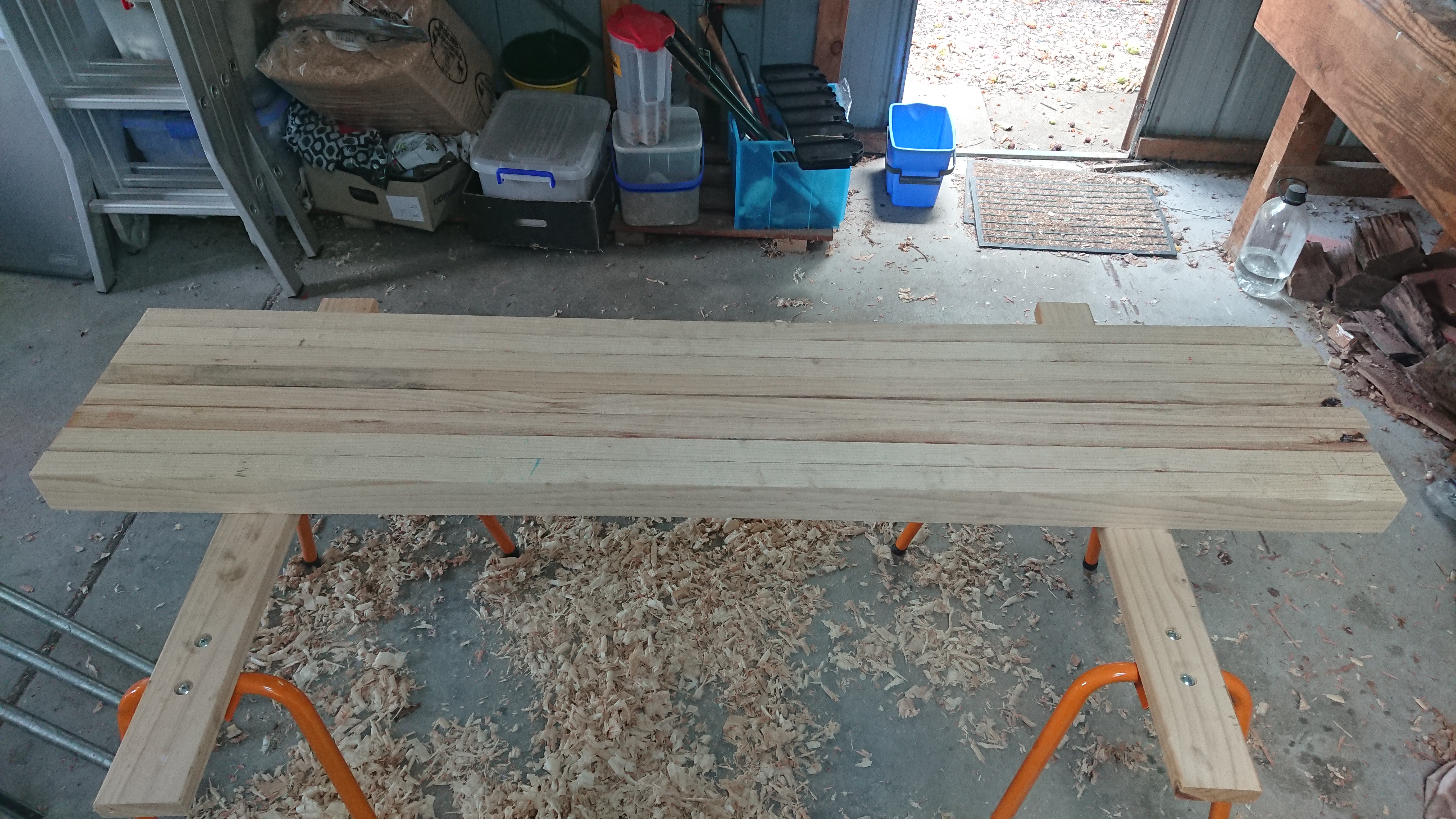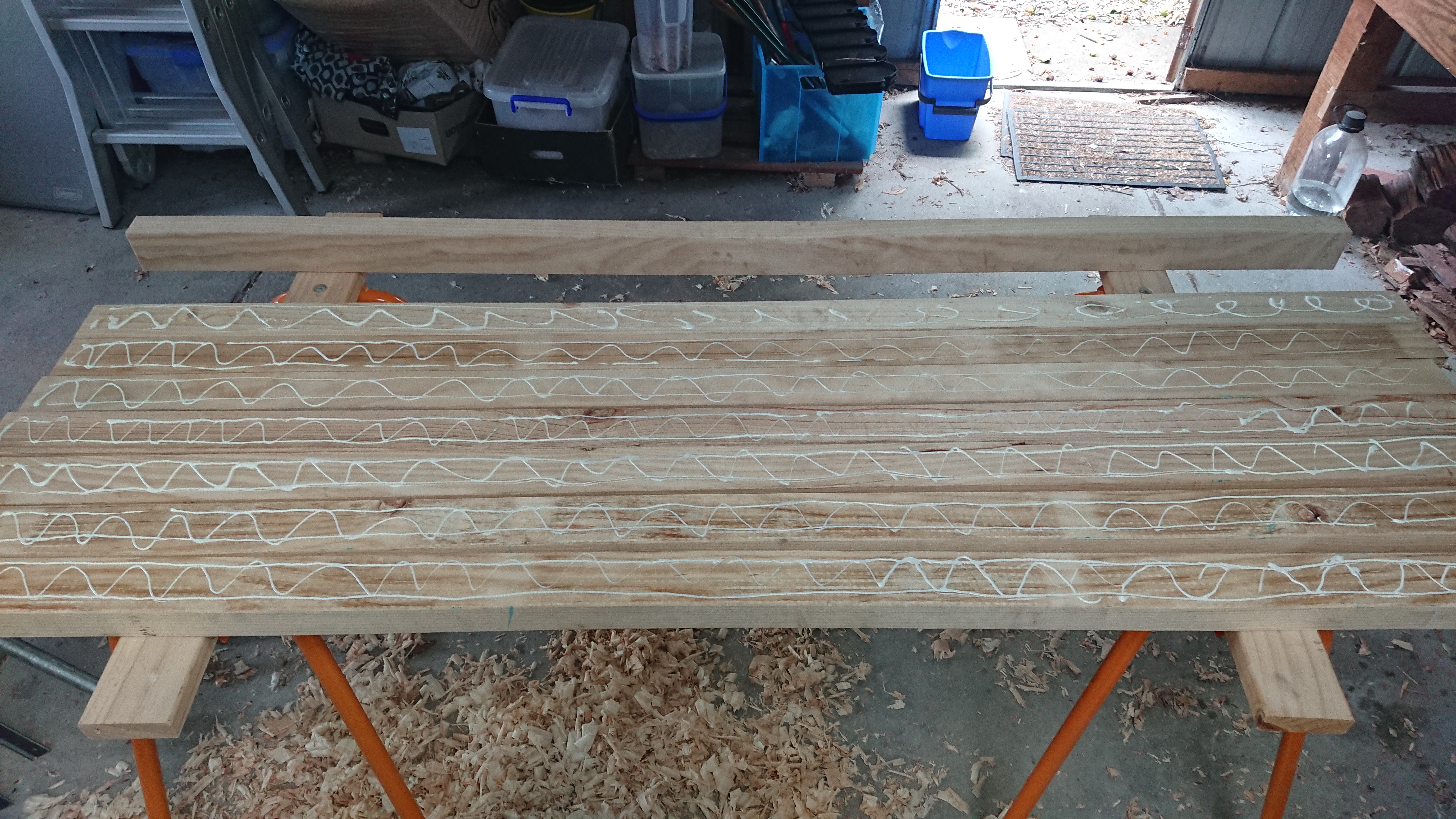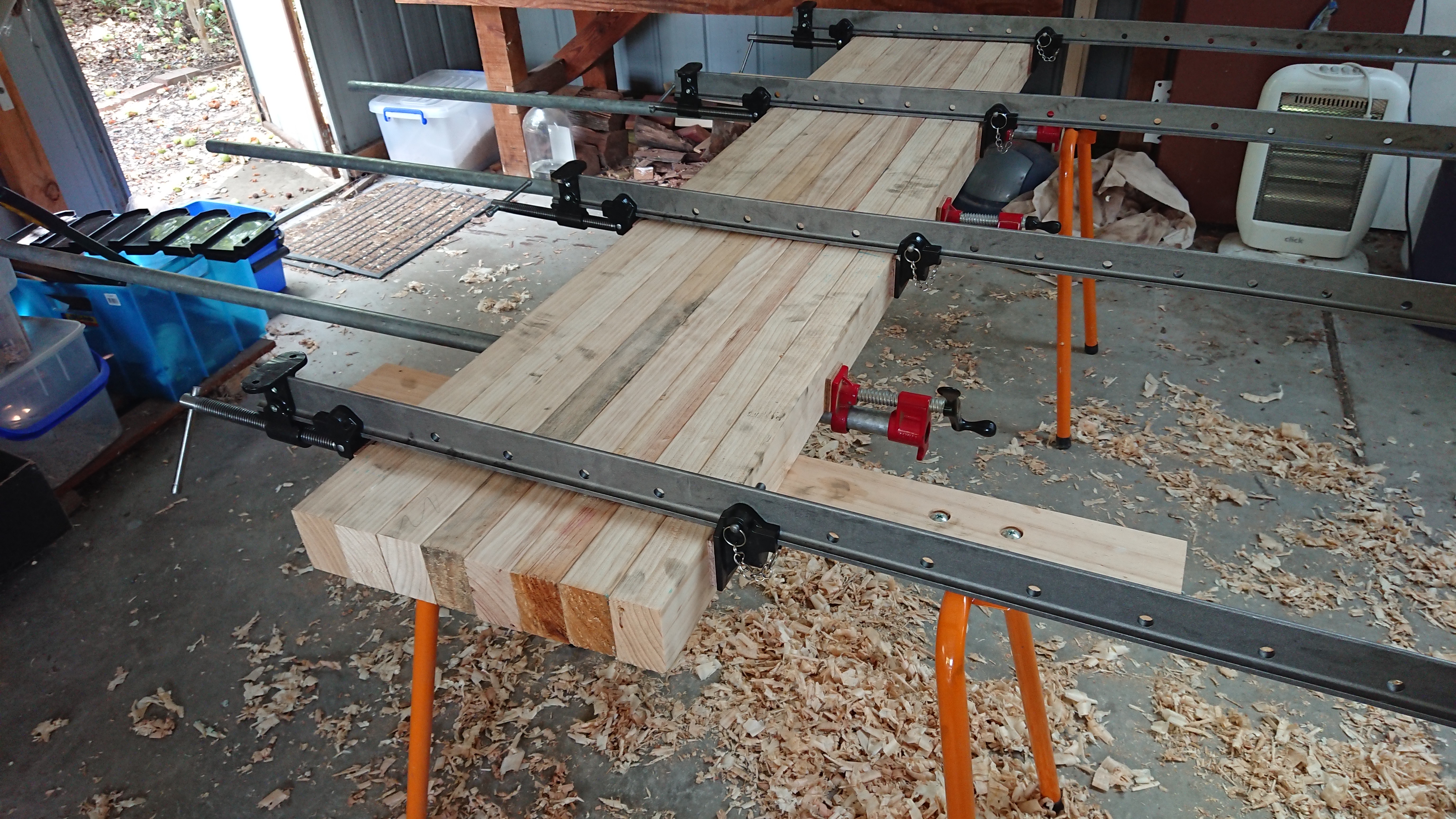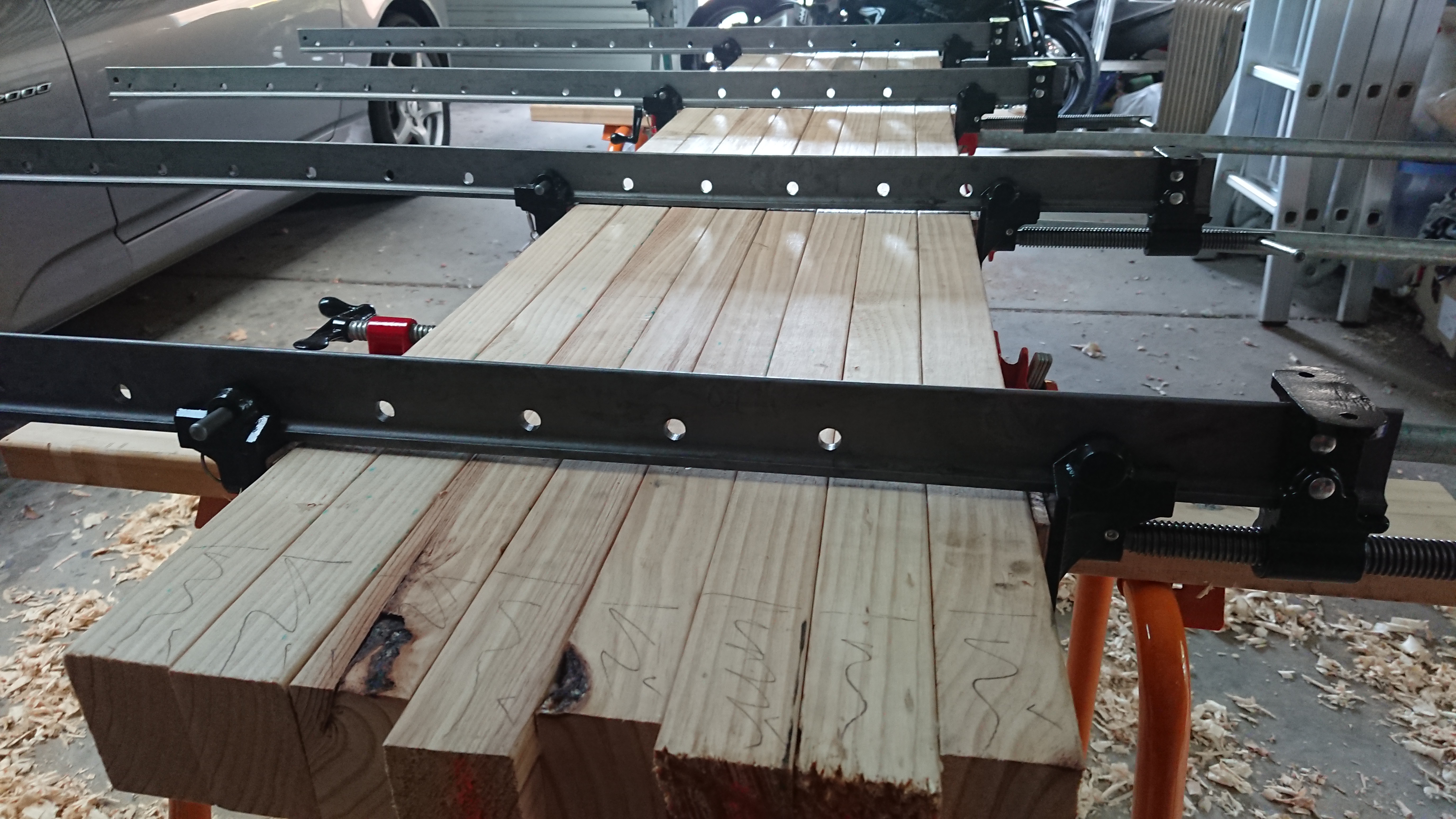Laminating the benchtop
I selected the eight best benchtop pieces, selected the best edge for each piece to make up the upper face of the benchtop, and decided what order to put them in. A few of the pieces were significantly bowed, so I tried to arrange them in such a way that the bowed pieces would straighten up under clamping.

I set the clamps up within easy reach, and set the jaws up to the correct span to fit across the benchtop.

I spread PVA wood glue on one face of each of the lamination joins, assembled the pieces and attached the clamps.



Unfortunately, it was a brutally hot day (max of 41.5 °C!) and the double-sided tape I used to stick the plywood to my vice jaws started to do the very opposite of sticking. The clamps started to slide off the plywood, and a couple of the clamps on the underside of the piece fell clean off. I assume this was due to the tape glue melting in the heat.
I was able to solve the problem by peeling off the tape itself and just relying on the residual glue left behind by the tape to keep the plywood in place, and this seemed to work a lot better.
I also noticed that the T-bar clamps in particular had a tendency to lift up at the head end, because there was so much mass in the clamp tail. I put a spare piece of wood across the clamp heads to try to counterbalance this a little bit, but the smart move probably would have been to put the whole thing on the ground with the T-bar clamps on the underside.
Lessons learned
- Don’t do things with glue in ridiculously high temperatures.
- Consider the balance of the clamps’ weight.